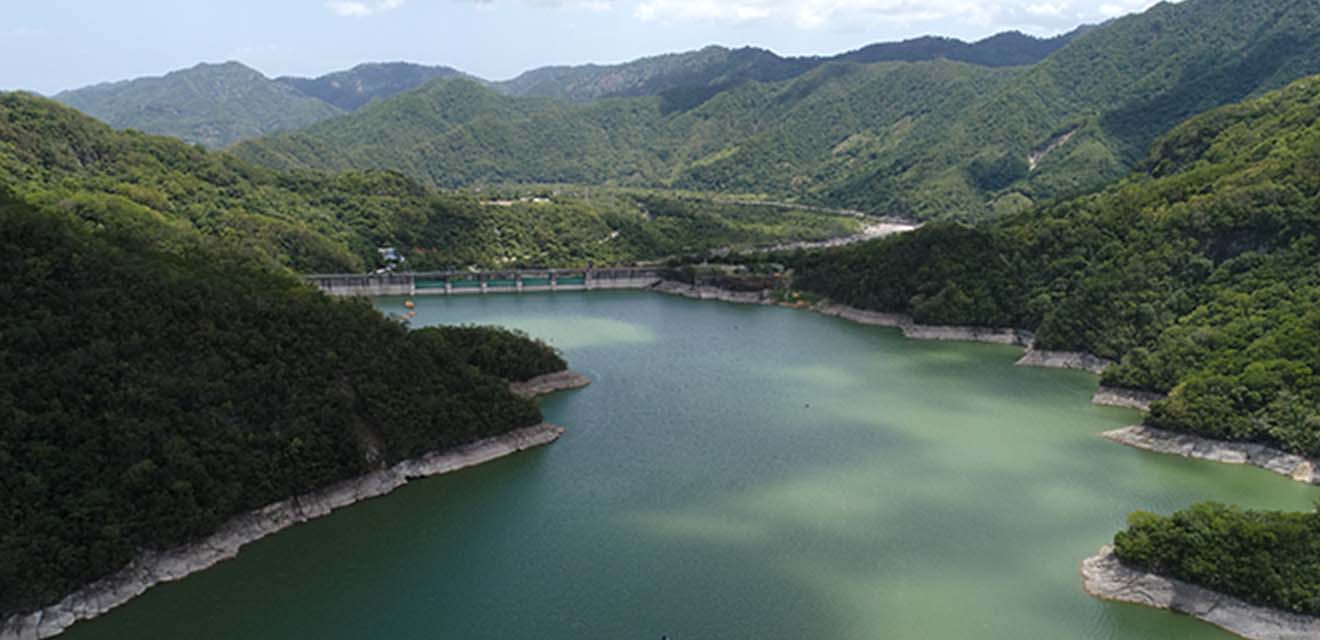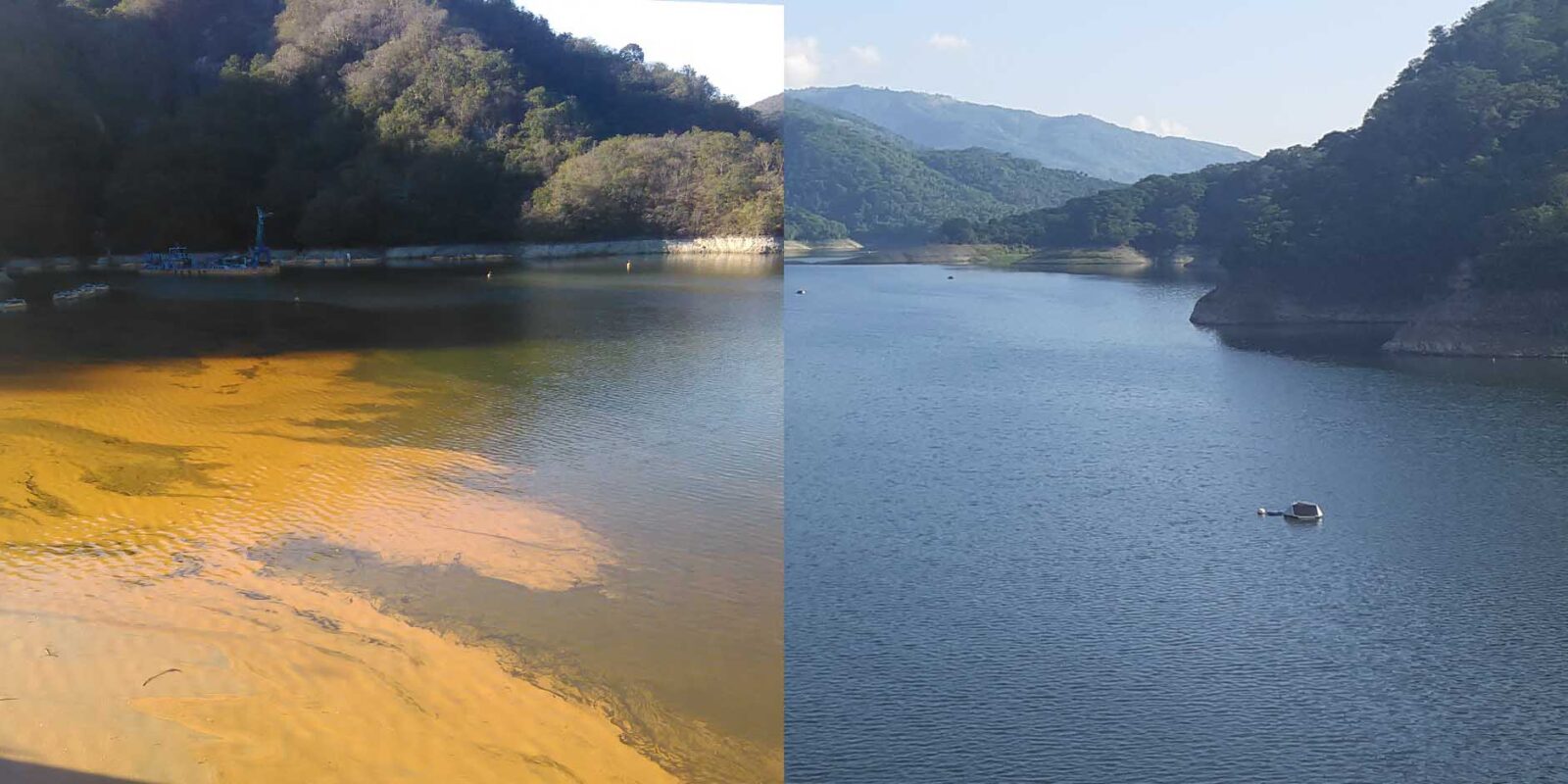In short
- Eco-friendly technological solution. Safe for fish, plants, people, pets.
- Predicts and prevents future algae blooms;
- Easy and fast to maintain.

In our recent webinar “Controlling algae blooms with ultrasound in water reservoirs,” Luis Salcedo, Subdirector of Operations at CAASD (Corporación del Acueducto y Alcantarillado de Santo Domingo), walked us through his journey from a damaging algae bloom to a reliable solution for a 7km2 drinking water reservoir.
The Valdesia reservoir is the primary drinking water supply for the population of Santo Domingo and its provinces. At the end of 2018, a massive algae bloom threatened the aqueduct’s operations, urging CAASD to search for solutions. The company applied various treatment methods, yet they all failed to solve the problem.
This blog covers the 3 main reasons Luis chose LG Sonic, and how he came to this decision.
#1: Treatment
When algae appeared and spread in the reservoir, CAASD tried treating the blooms with aluminum sulfate. In terms of the operation for a reservoir of approximately 7 km2 that stores a volume of 167 million m3, treating the entire water body with aluminum sulfate was practically impossible.
With no consistent results, the algae reached the water treatment plant, making it practically impossible for the filters to remove them. The filters got clogged, and needed to be removed to be cleaned mechanically.
For many years, CAASD also used copper sulfate as an algaecide. This method didn’t solve the issue, and aeration and chemicals were also unfeasible, as they needed to be dosed frequently.
When the algae reached the plant, technicians recommended dosing calcium oxide at the intake. The results were not what as expected. Another recommendation was to use a net to collect all the algae nearing the aqueduct intakes.
CAASD tried that too, but their efforts were in vain, as they required staff members to be available 24 hours a day. Besides, the algae that had formed couldn’t be managed with that method.
Next, the company noticed that the algae bloom was approximately one meter deep. They tried overflowing the dam to remove some of the contaminated water. Still, the algae growth was out of hand.
Luis says, they didn’t take the aqueduct out of service between treatment methods. Still, they only started seeing significant improvements in water quality only after two weeks of applying LG Sonic treatment.
#2: Prevention
In the video below, you can see the difference in water quality before and after the ultrasonic treatment. The images speak for themselves. We can only imagine the gravity of putting at risk an aqueduct that supplies 37% of 3.5 million inhabitants.
On that note, Luis states that such a situation cannot happen again. He’s determined to do everything it takes to avoid it. He also reminds us of the disastrous implications of an aqueduct of this magnitude going out of operation:
“That is why I am so categorical in saying that we here have to do everything that is humanly possible so that this does not happen again. Everything, from the preservation of the lake, from controlling the discharge, to making an agreement with the integral management of the basin. The measures to be taken are multidirectional.”
He continues:
“We have to make these discharge of nutrients as little as possible, because reservoirs are always facilities that are prone to the development of algae due to the condition they have, where the water is stagnant.”
This is especially important in hot climate countries, which favor harmful algae.
“We have to be prepared, so that at any time we can face this type of situation. At the end of all the problems, we decided on the LG Sonic technology because it was the one that guaranteed us a permanent treatment with fewer complications, which will cover all the areas of the dam. And as a result of that, today we have 47 buoys installed on the dam. We have achieved excellent results.”, added the Subdirector of Operations.
LG Sonic technology has water quality sensors integrated into its system. The sensors measure key water parameters in real-time. Keeping an eye on these parameters is crucial for predicting algae growth.
#3: Maintenance
Luis Salcedo values the relationship and communication with the LG Sonic team that helps with maintaining the equipment. As for ensuring the effectiveness of the ultrasonic treatment in the long-run, Luis explains:
“We have a speed boat […] the workers go and basically clean the lens of the transmitters, which already have a mechanical brush (Aquawiper™) that cleans them automatically after every reading [from the monitoring sensors] […] We also check if the datalogger is on, that the solar panel board is O.K. In other words, a physical and mechanical check is made to the instrumentation, to the connection, to the battery. It’s really simple. And it does not interfere with navigability at all.”
